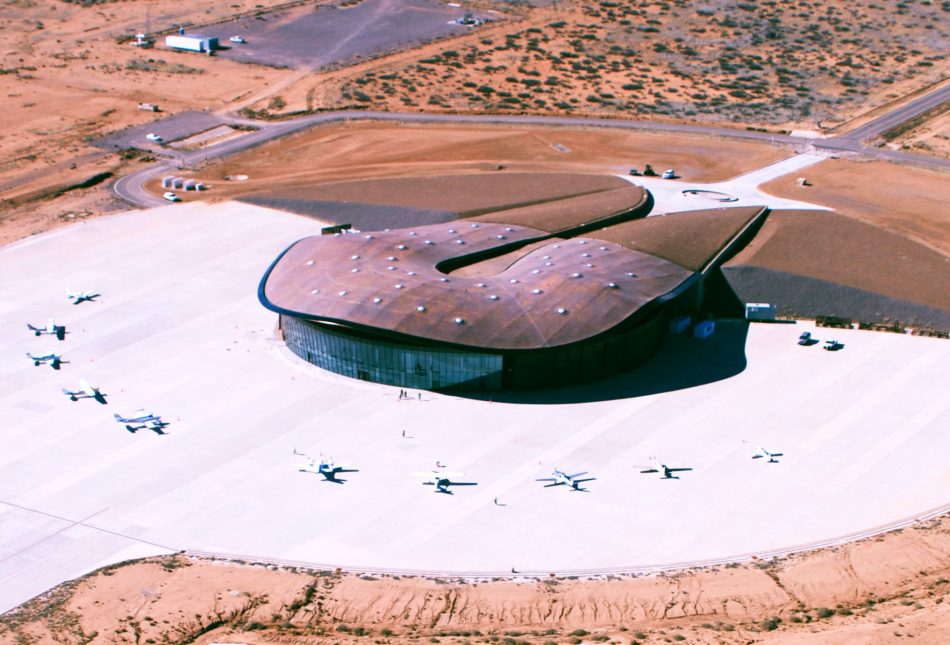Spaceport Claims Don’t Add Up

The following appeared in the Las Cruces Sun-News on February 12, 2020.
![]()
A study released recently by the consulting firm Moss Adams made headlines with the rather implausible claim that Spaceport America began producing net economic and fiscal benefits for New Mexico as early as 2013. Since its anchor tenant, Virgin Galactic, has yet to launch a single manned space tourism flight, the Rio Grande Foundation undertook a detailed critique of these claims, relying on the audited financial statements from the Spaceport Authority and Capital Spending Records.
Using these publicly-available data along with information from the Moss Adams report which were not previously available (such as estimates of Virgin Galactic’s spending on employee relocation), we estimate the Spaceport project has cost taxpayers roughly $275 million while generating just $54.3 million in income over the last 12 years. The Spaceport’s audited financial statements do not list any revenue other than taxes and transfers from the State government before 2015, making the 2013 breakeven date presented to the media especially egregious.
Only some very creative accounting can turn a $221 million dollar loss into a net profit, but no one has ever faulted paid proponents of more government spending for a lack of creativity. The report seems timed to gather support for a significant hike in tax dollars appropriated for the Spaceport. Notably, the most “pessimistic’ scenario imaginable in the Moss Adams scenario analysis projects “only” $81.25 million of additional financing. Runway extensions, hangars, and other infrastructure have been added on to the facility over the years and (as we learn from the Moss Adams report) there are millions of dollars worth of taxpayer-funded infrastructure projects to come at the facility.
One of the biggest problems with the Moss Adams report is it considers the $100 million collected and spent by various Southern New Mexico counties as a positive in the overall return on the facility. It is true that construction companies were hired and projects were undertaken at the facility with that $100 million, but what about the $100 million in foregone economic activity on the part of taxpayers and businesses who saw their gross receipts tax burdens go up in order to fund the Spaceport?
This report, like so many other “economic impact studies,” relies on a controversial tool known as “input-output modelling,” a favorite for lobbyists and consulting groups eager to show credulous politicians that $100 million for a new sports stadium will create an economic renaissance in the area. These models take in more sober revenue calculations, and multiply them by arbitrarily determined “multipliers,” which inflates the benefits based on little more than faith and fancy math.
So-called economic “multipliers” are problematic under the best of circumstances, but one of their worst problems is when their impact is calculated only after the money is taxed away by the government. Ignoring the economic impact of allowing people to keep their own money not only stretches logic, but such mental gymnastics could be used to make any government program look like a winner for the economy.
At this point, we at the Rio Grande Foundation are not calling for the State of New Mexico to sell this facility as we have in the past. In fact, like most New Mexicans we also hope for a successful manned flight out of Spaceport America in the near future.
But, to call the facility a financial success before the primary purpose for which it was constructed rings false on its face. And, to use this as a talking point to request even greater access to taxpayer funding in the near future is to base important economic policy decisions on faulty information. We in New Mexico should know better than most that new government spending programs are not the ticket to prosperity. After a decade of broken promises, it’s well past time companies like Virgin Galactic stopped asking taxpayers to pick up their tab.
Seymour is a policy analyst with New Mexico’s free market think tank, Rio Grande Foundation
